CAS-3 series also know as XW-2
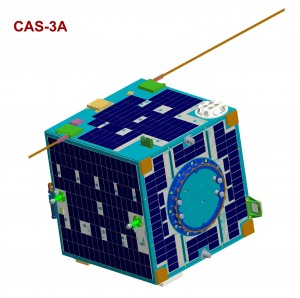 CAS-3A (microsatellite architecture)
CAS-3A (microsatellite architecture)
| Dimensions: | 400×400×400 mm (20 kg) |
| Stabilization: | Three-axis stabilization system with its +Y surface facing Earth |
| Antenna: | Deployable antenna, one 0.25 λ monopole VHF antenna on +Z side and one 0.25 λ monopole UHF antenna on the –Z side, close to the each edge of satellite body |
| Call Sign: | BJ1SB |
| CW Telemetry Beacon: | 50mW, 22 WPM |
| U/V Mode Linear Transponder: | 100 mW, 20 kHz bandwidth, inverting |
| AX.25 telemetry: | 100 mW, 19.2k/9.6k baud GMSK |
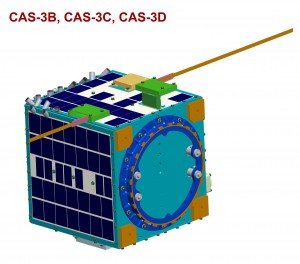 CAS-3B, CAS-3C and CAS-3D (micro satellite architecture)
CAS-3B, CAS-3C and CAS-3D (micro satellite architecture)
| Dimensions: | 250×250×250 mm (9 kg) |
| Stabilization: | Tree-axis stabilization system with its +Y surface facing Earth |
| Antenna: | Deploy-able antenna, one 0.25 λ monopole VHF antenna on the +Z side and one 0.25 λ monopole UHF antenna on the –Z side, close to the each edge of satellite body |
| Call Signs: | BJ1SC (CAS-3B), BJ1SD (CAS-3C), BJ1SE (CAS-3D) |
| CW Telemetry Beacon: | 50 mW, 22 WPM |
| U/V Mode Linear Transponder: | 100 mW, 20 kHz bandwidth, inverting |
| AX.25 telemetry: | 100 mW, 19.2k/9.6k baud GMSK |
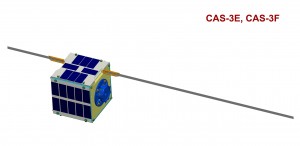 CAS-3E and CAS-3F (CubeSat architecture)
CAS-3E and CAS-3F (CubeSat architecture)
| Dimensions: | 110×110×110 mm (1.5 kg) |
| Stabilization: | Spinning stabilization using permanent magnet torquer |
| Antenna: | Deployable antenna, one 0.25 λ monopole VHF antenna on the +Z side and one 0.25 λ monopole UHF antenna on the –Z side, close to the each edge of satellite body |
| Call Signs: | BJ1SF (CAS-3E), BJ1SG (CAS-3F) |
| CW Telemetry Beacon: | 50 mW, 22 WPM |
| U/V Mode Linear Transponder: | 100 mW, 20 kHz bandwidth, inverting |
| AX.25 telemetry: | 100 mW, 9.6k baud GMSK |
Frequency Allocation Diagram:

Uplink:
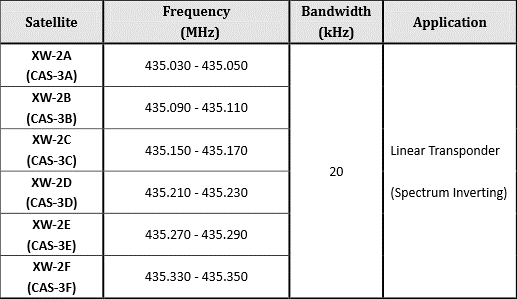
Downlink:
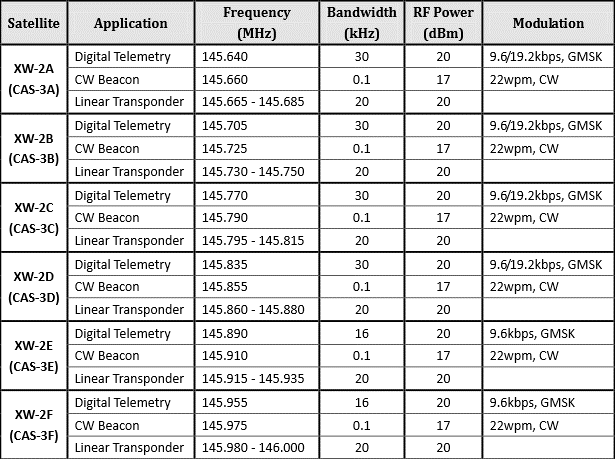
Status
To be launched at the end off 2012 CAMSAT has announced that the CAS-3 amateur satellite system is nearing completion, and nigh CAS3 Chinese amateur satellites will be launched June 20th 2015 September 2015 scheduled for sometime between September 7th and 9th.
Homepage and other references:
Source:
Frequency chart for the nine amateur satellites.
